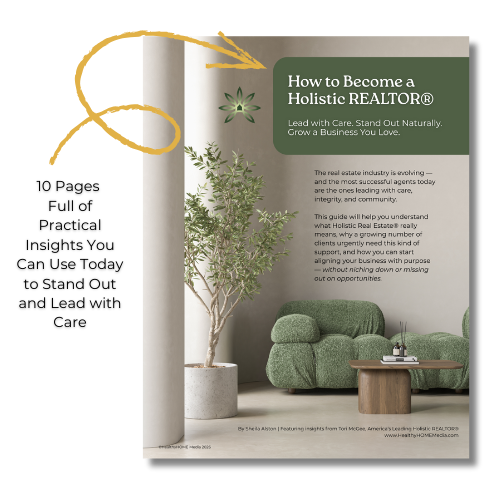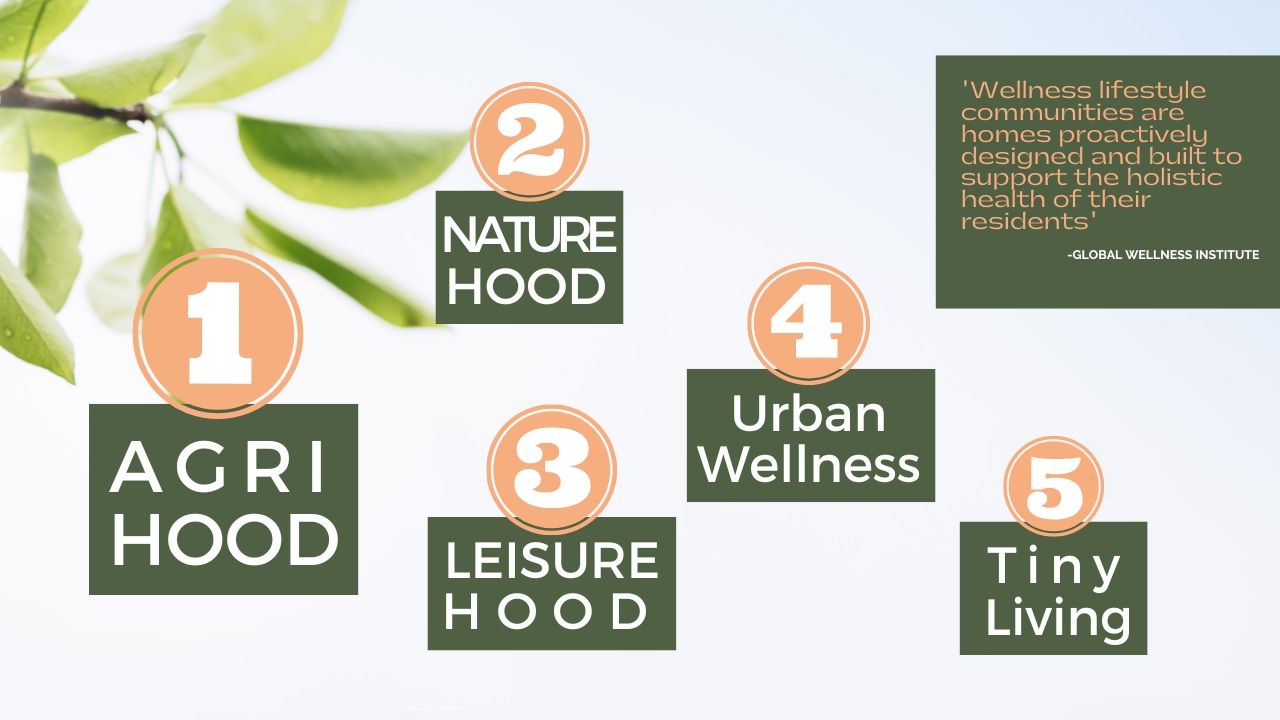
5 Types of Wellness Lifestyle Communities
Sep 01, 20225 Types of Wellness Lifestyle Communities
A Healthier Way of Living
By, Sabrina Agular & Sheila Alston
A wellness lifestyle can vary from person to person. To some, this means going to your early morning yoga session, drinking green smoothies, or downloading meditation apps on your phone. At the end of the day, no matter what your approach to wellness is, we all look for the details that make life easier and more enjoyable both physically and mentally. But as we strive to be healthy our built environments are falling short.
Homes are now being built for the benefit of only the individuals that live in them leading to a “me only” mentality and according to the Global Wellness Institute, “the way we have built homes in the last century is reinforcing lifestyles that are making us sick, stressed, alienated and unhappy.” With private backyards and attached garages, there is no need to walk outside of your home. But how does this type of living promote social interaction with neighbors or build a sense of community? When the built environment is designed for driving over biking, sitting over walking, and screen time over outdoor spaces, the result is that the home environment is promoting and reinforcing the very opposite of what is needed to live a healthier lifestyle.
So how do we change this? How do we build a space that allows for a life that is healthy for not just your family, but everyone in the community?
Forward-thinking developers over the last 20 years have been asking themselves this very question and thanks to them, there is a whole new segment of real estate now called Wellness Real Estate. As a result, Wellness lifestyle communities are a growing trend all around the world and this concept will pave the way for future homes. The Global Wellness Institute defines a wellness community as “a group of people living in close proximity who share common goals, interests, and experiences in proactively pursuing wellness across its many dimensions. It can be rooted in a purpose-built physical space or can be cultivated around shared culture or social networks without purpose-built structures.” This movement is paving the way for more holistic places to live, and more families are choosing these communities when deciding where to raise their families.
5 Types of Wellness Lifestyle Communities
The amazing thing about these wellness communities is that they can all borrow and learn from each other, so there’s no need for every community to be necessarily started from scratch. There are hundreds of new and current features that wellness communities can learn from each other. Some examples of wellness-focused residential communities and new projects on the rise that we will be covering are agrihoods, surban communities, and tiny home communities.
This segment of the industry is growing and constantly changing, but what we’ve seen so far is that many of new communities fall into a few different types: Agrihoods, Naturhoods, Leaisurehoods, Urban Wellness Communities and Tiny or Minimalist Living.
#1 The AGRIHOOD
Agrihoods are communities that are centered around a farming component. They will emphasize farm-to-table living in a collaborative setting and usually provide education, and access to an organic farm. Agrihoods focus on allowing residents to interact with the farmers essentially eating organic whole foods from their own backyard. Nothing is fresher than that! Many people that feel commercial agriculture is slowly killing us with pesticides and other toxins are seeking ways to feel more secure about what goes in their bodies, and agrihoods are making farm-to-table living accessible. What’s great is that it’s available even to those that don’t necessarily have a green thumb.
A neighborhood centered on an organic farm is also a sustainable business model. By building the farm and the neighborhood around it, the farm has instant customers which takes much of the risk out of the equation. It also provides the perfect centerpiece for the neighborhood that promotes social connection and interaction by offering, for example, a neighborhood farmers market, making the development of relationships much simpler than it would be in a typical residential area. Although not all agrihoods are the same, sustainability, healthy eating, community, and belonging are always integral to the overall design and development of the community.

Some examples of Agrihoods in the US:
Serenbe, located outside Atlanta, Georgia. (The first and original Agrihood)
Olivette, a riverside community in Asheville, North Carolina
Agritopia, located in Gilbert, AZ
Fox Point Farms, a new development in Encinitas, CA
Grow Community, located in Bainbridge Island, WA
#2 The Naturehood
Naturehoods for Surban Livng
Naturehoods are communities that don’t necessarily center around an organic farm, but they offer residents more direct access to nature. Whether it be community hiking or biking trails, community members will be able to enjoy more of the great outdoors.
Surban, which combines the best of urban and suburban living, is still a very new idea, but they are highly desired because they offer suburban features, like more space, and better schools with the convenience of easy access to urban amenities, like walkability to dining and shopping.
According to reports, surban living is expected to draw households to the United States over the next ten years. At least 80% of the new generation of households with young families are anticipated to come from them. This is because younger families are seeking the facilities urban living offers, with more child-friendly housing and education that we see in the suburbs. Surban populations are also growing as more young families choose to rent rather than buy homes. Surban is also all about creating sustainable places where people can live happy healthy lifestyles. They are designed for people and accommodate for more walking, bicycling, and use of local transportation rather than cars. Additionally, they make it simple for people to access more businesses for both work and leisure.
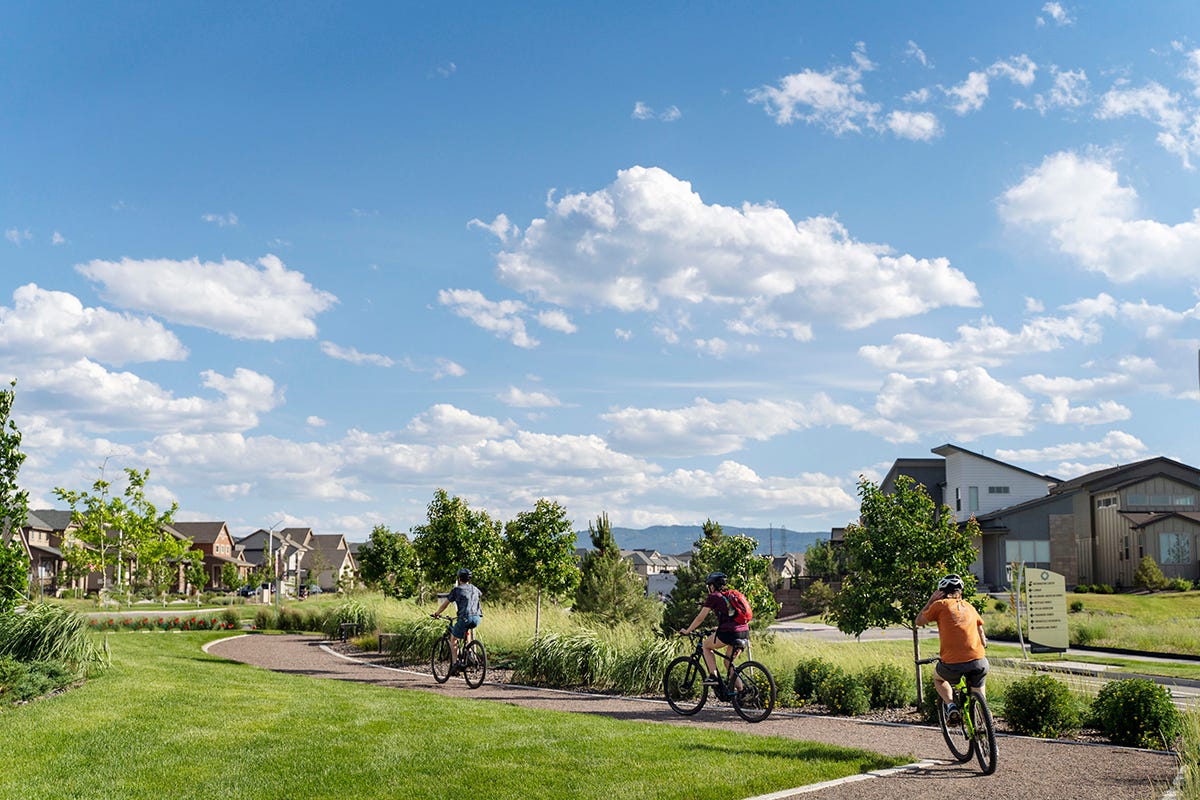
Examples of Naturehoods and Surban communities:
Sterling Ranch, a master-planned community outside Denver, CO
Rancho Mission Veijo, a master-planned community in Orange County, CA
#3 The Leisurehood
Long before wellness lifestyle communities were even defined, luxurious resort/spa destinations were the ultimate dream for a relaxing vacation destination. Many of these destinations have real estate that is available on the resort property. As more and more people are now working from home and able to live anywhere connected to the internet, resort destinations are giving residents the ultimate life of pleasure with world-class service and amenities right out your own front door. As demand for remote-based work has increased, new communities that prioritize the residents over the resort are changing the way living your best life could potentially mean for those who get to call this type of community home. Let’s call these types of developments, Leisurehoods.

Storyliving by Disney™ is a new concept that brings residents a hotel with a range of shopping, dining, and entertainment anchored by an approximate 24-acre grand lagoon.
Kukui’ula in Kuai located on the south shore of Kuai offers residents access to world-class resort amenities and amazing outdoor adventures right at their doorstep. Residents and resort guests can walk or hike up to the farm they have onsite to pick their own fresh produce or for a gardening lesson.
#4 Urban Wellness Communities
For those who love to be able to walk or bike to neighborhood restaurants, parks and/or to work, cities have always been the choice over suburban living. Today, urban dwellers can experience an elevated level of well-being as metropolitan areas across America have more and more healthy dining options, different types of workout and exercise facilities to choose from and access to alternative medical treatments not usually as available in suburban areas.
Some people just love being connected to the energy of fast pace living and forward-thinking developers are tapping into being able to design an urban residential community that offers more than covered parking and a weight room.
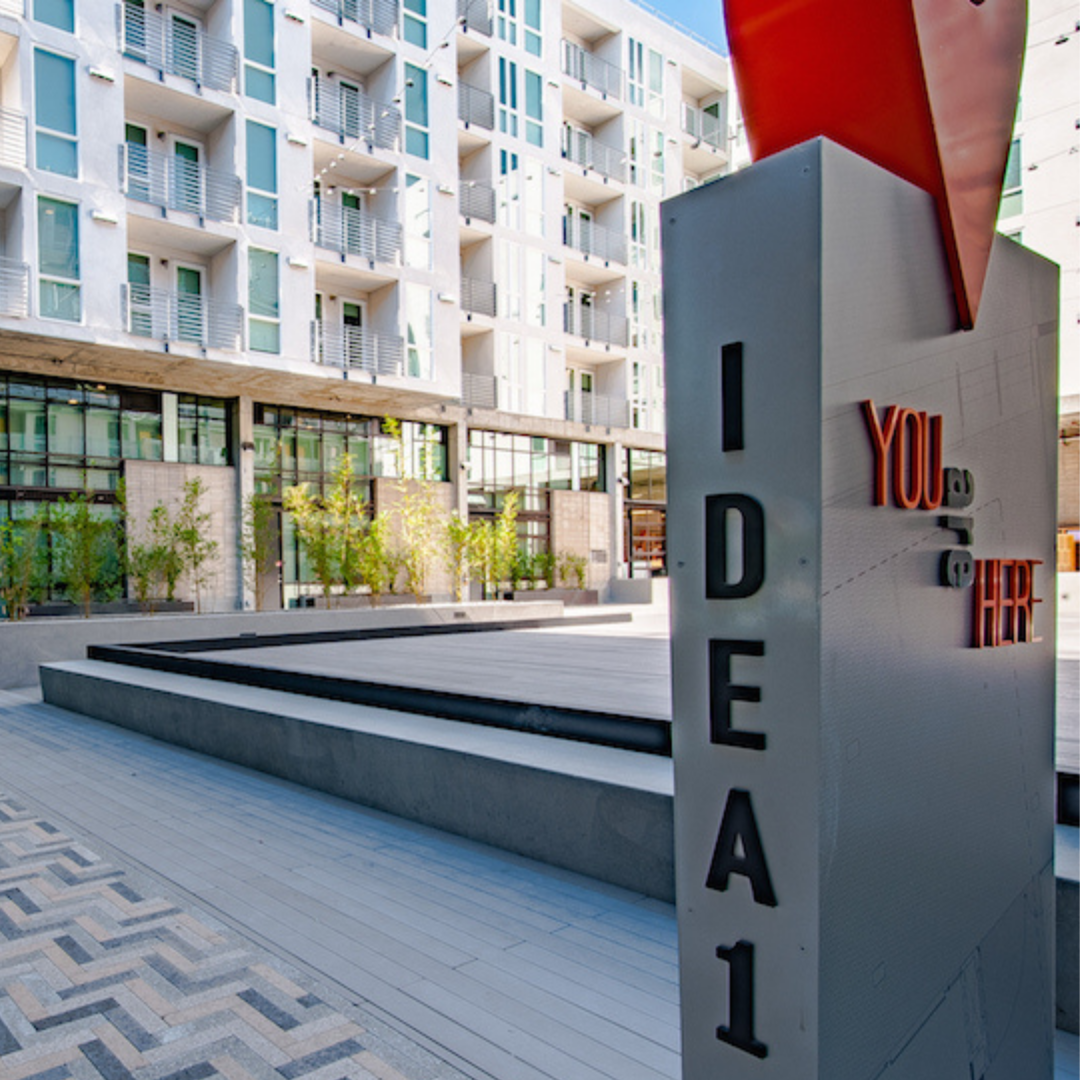
San Diego’s I.D.E.A. District is the perfect example of this. “The I.D.E.A. District is a transformative urban initiative which aims to create 13,000 design and tech jobs in the next 12 years, across 35 city blocks in Downtown San Diego’s East Village.” So for young professionals or those who consider themselves urban dwellers, the idea district has planned for people to life, work, and play in a setting designed to bring people together for Innovation, Design, Education, and Arts. (I.D.E.A.)
#5 Tiny Living
Minimalist and tiny living is another type of housing that has been exploding in recent years. To these folks, well-being means living by the concept of “less is more” which provides more freedom to travel and experience more of the world rather than to work just to accumulate more things like a bigger house, more furniture, and cars.
A home is generally considered a tiny home if it’s under 600 sqft. However, the typical tiny house is around 225 sqft and many are on wheels allowing homeowners to move location to what is called pop-up neighbors. These areas can serve as both permanent residences and a destination for visitors. People who live in tiny homes have the option of leading simple lives with low expenses and lots of freedom. From eco-villages to vacation retreats, tiny home communities offer a connection to a close-knit community and are created to support people’s health and wellness lifestyles. To encourage outdoor activities, some of these communities provide walking paths, clubhouses, and outdoor pavilions. Members of said communities can easily connect with one another because they all desire to live simple lives, and are interested in sustainability.
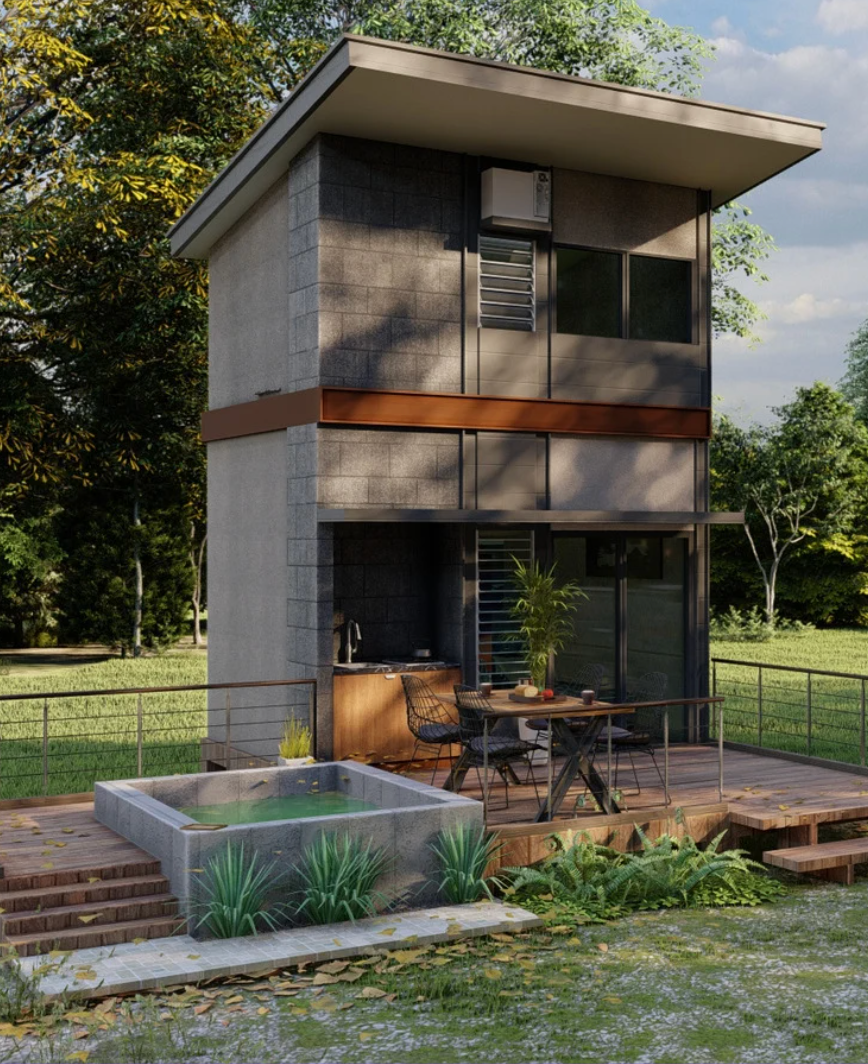
13 Livable Tiny House Communities by the Spruce
How will you know if a community is a wellness lifestyle community?
Now that wellness is becoming a buzzword, it’s important to understand that many new communities will hop on the wellness wagon and use the same marketing lingo to sell more homes. Adding wellness features as an afterthought or an add-on is still going to benefit community members, so it’s not necessarily a bad thing, but a wellness lifestyle community is more than a neighborhood with a pool and dog park. It is centered on wellness, and the well-being of the residents who will live there are the foundation for which the neighborhood’s design and mission were created. So instead of feeling like an afterthought or marketing hype, a true wellness lifestyle neighborhood will have built-in features and amenities that bring people together, that offer healthy options and access for the residents so that healthy living becomes an easy way of life.
In any case, no matter how we achieve healthier ways of living and being, knowing that these options are available to us is a wonderful thing and I’m so happy and inspired to know that so many options even exist today! So if you are looking for a new community to live in, be sure to do some research and ask questions! Maybe you’ll find a wellness lifestyle neighborhood that aligns with your values that is meant for you!
Learn more about Wellness Real Estate and how you can start engaging your audience with real estate related topics that is easy as copy & paste!



